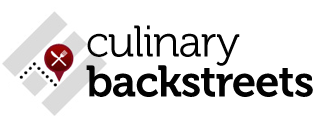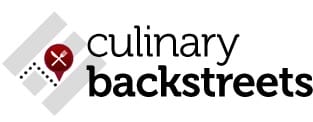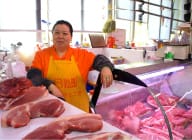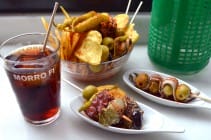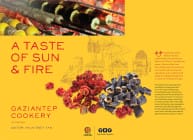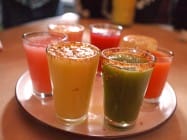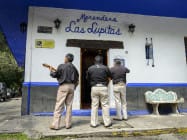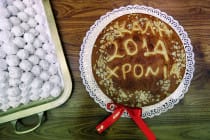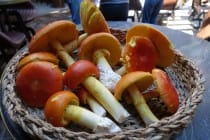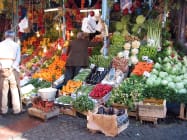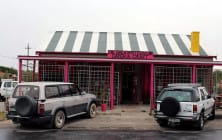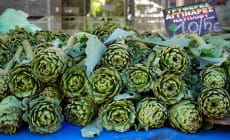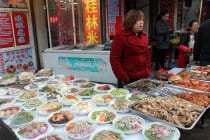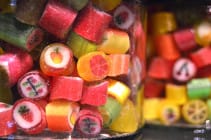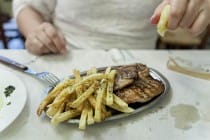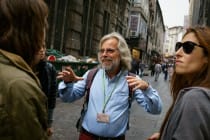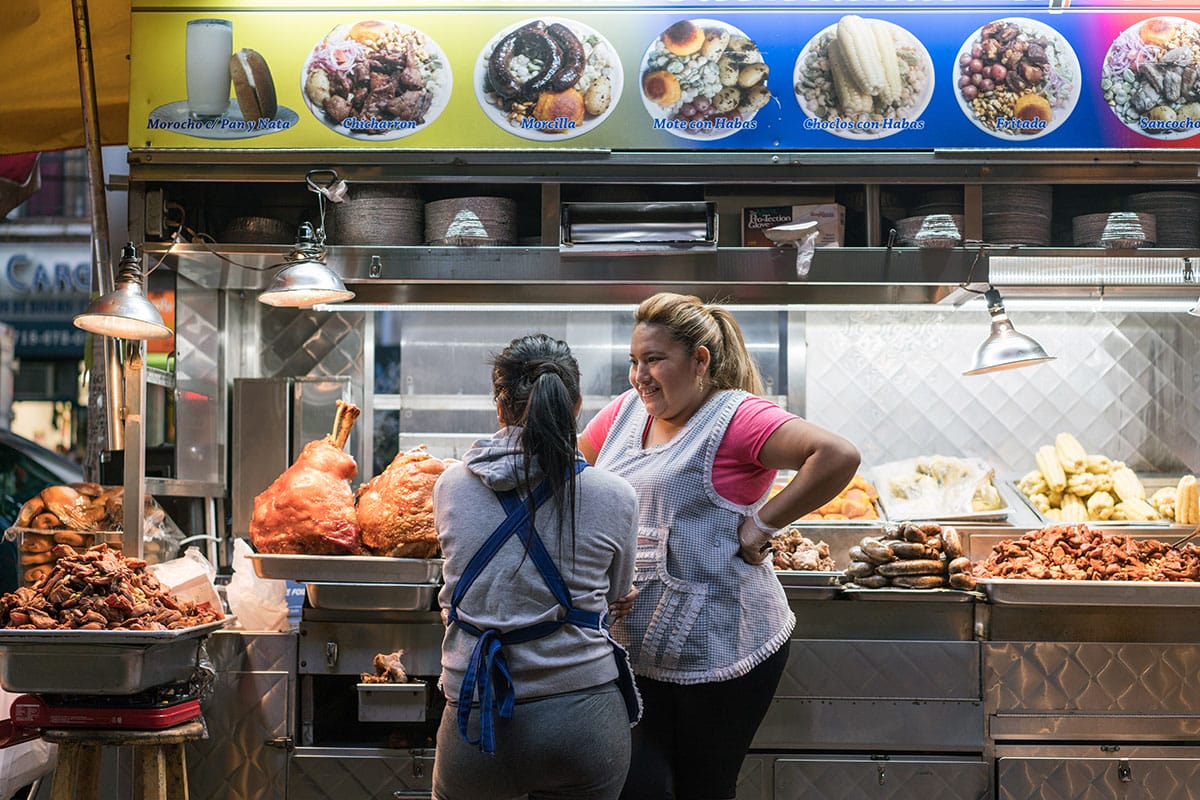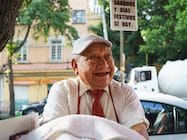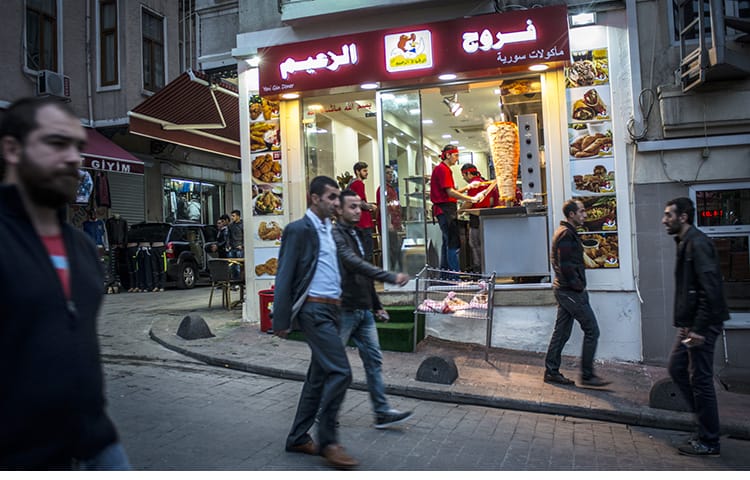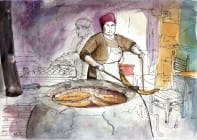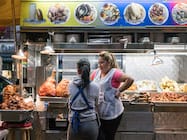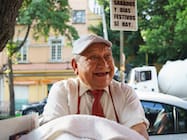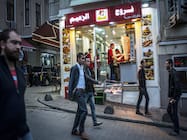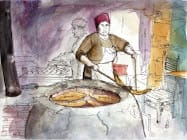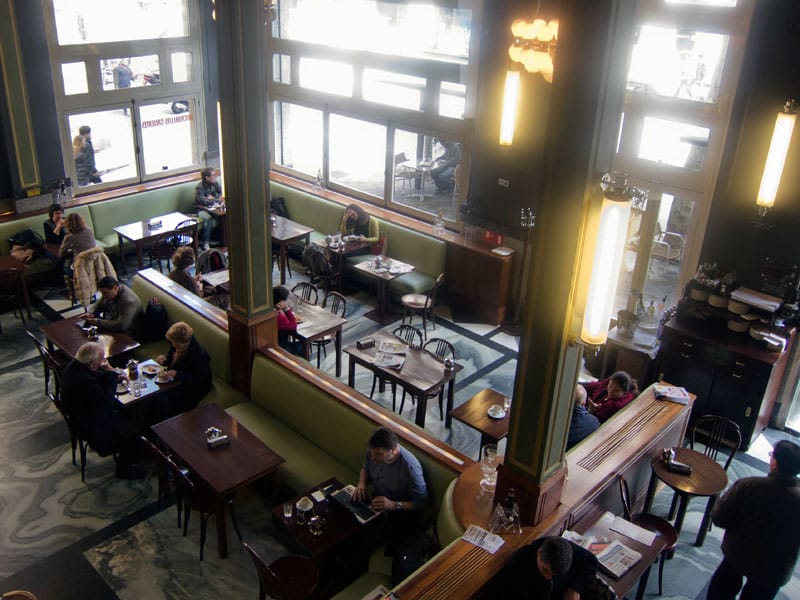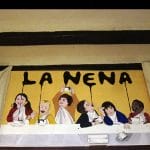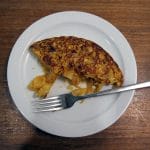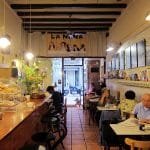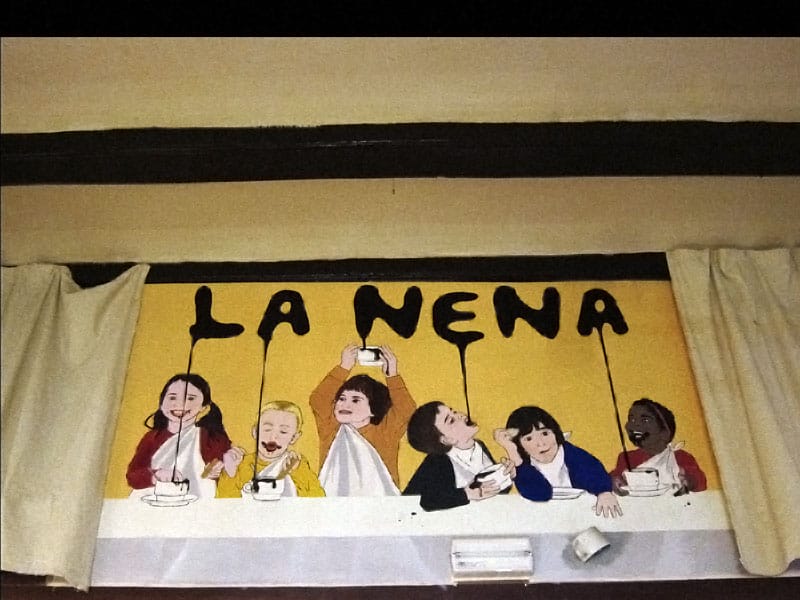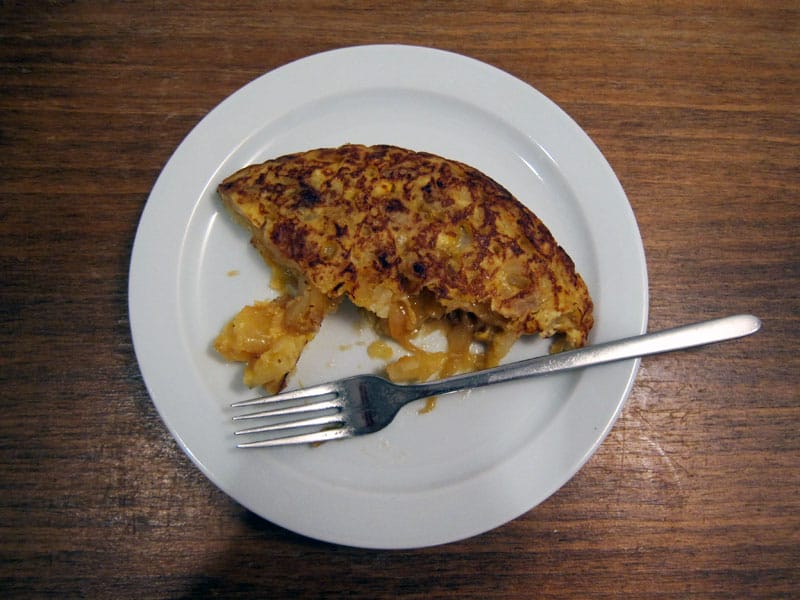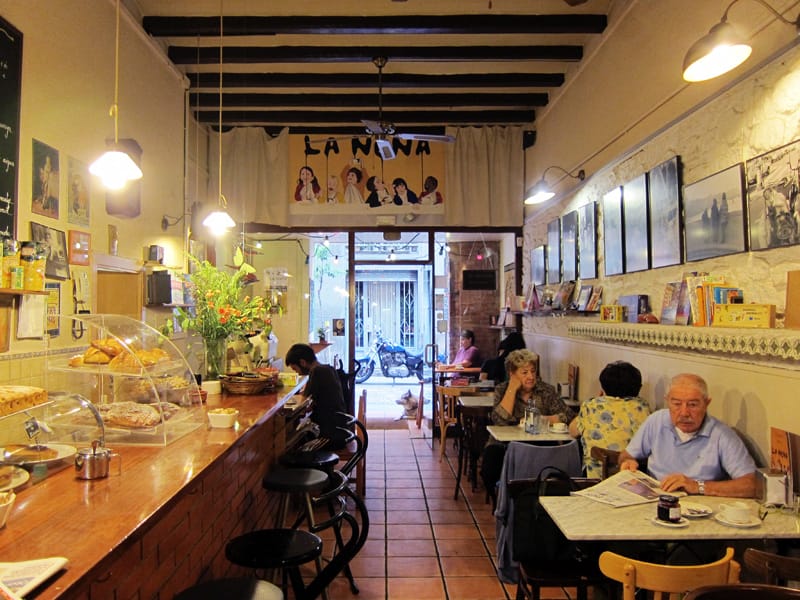Dear Culinary Backstreets,
Where can I go in Barcelona when I’m tired of sightseeing and I just want to sit down and relax with a cup of coffee?
Visiting museums and landmarks can be a lot of fun when you’re a tourist but sometimes you can learn more about the life of a city by sitting in a chair in a café than you can by reading any guidebook. In Barcelona, there’s no shortage of cafés but like anywhere else, it can sometimes be a bit tricky to find one that has just the right ambiance. After years of trial and error, I’ve found a few cafés in which I’m always happy to while away as much time as possible, whether it be reading the newspaper, working on my laptop or just people-watching.
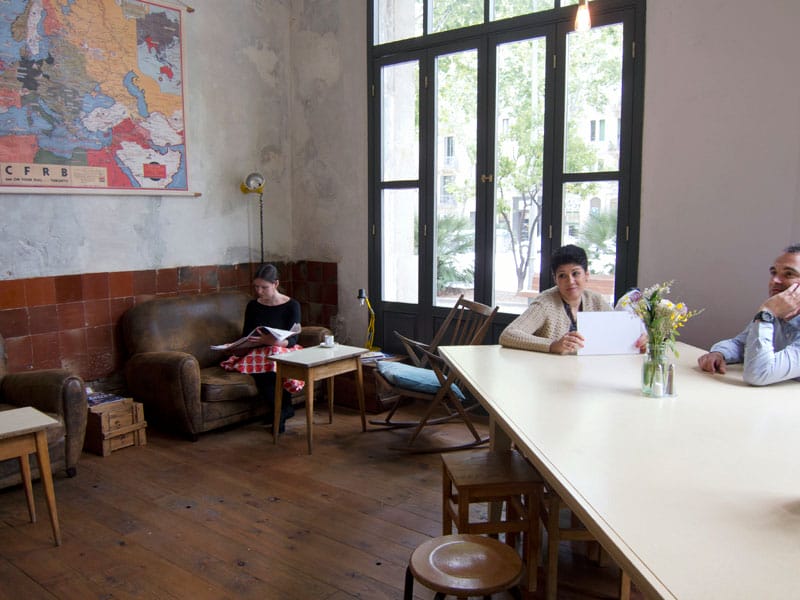
But first there are a few things you should know about coffee in Barcelona. First of all, compared to many other cosmopolitan cities around the world, the coffee in Barcelona is downright cheap, rarely costing more than €2 for a cup (and usually much less). I’m not talking about the brewed drip coffee Americans are used to. In fact, you will likely not see a single American-style coffee machine in Barcelona, no matter how many cafés you visit. Instead, the Spanish prefer espresso-style coffee. Even in Spanish homes, coffee is typically prepared with a stovetop Italian-style “moka pot” rather than with an electric coffee machine. Secondly, knowing how to say “un café, por favor” is not enough. You need to be more specific, as there are a dizzying number of coffee permutations available.
Here is a quick primer on the four most common varieties to help you cover your bases:
un café solo – a regular espresso
un café cortado – an espresso with just a dash of warm milk, often served in a small glass
un café con leche – half espresso, half milk (similar to an Italian latte)
un café con leche corto de café – a café con leche that has more milk than coffee
Often you will be further asked if you want your milk caliente (hot) or templada (warm). If you order a decaf, they will ask if you want it made with a sobre (a small envelope of instant decaf) or from the máquina (the espresso machine). And you thought the options at Starbucks were confusing!
Below is a list of a few of my favorite Barcelona cafés:
Bar Velódromo
Originally opened in 1933, El Velódromo (pictured above) has been the site of everything from secret political meetings during the Spanish Civil War to meetings of Barcelona’s Tibidabo Bicycling Club. After being closed for nearly a decade, this classic bar/café in the Left Eixample was reopened again in 2009 with well-known chef Jordi Vilà (of the Michelin-starred restaurant Alkimia) at the helm. The high ceilings, mirrored bar, leather booths and Art Deco touches all give the place the feel of an old-fashioned Parisian brasserie. However, the menu is pure Spanish, with excellent renditions of classics tapas such as ham croquetas and patatas bravas. I especially love going in the early mornings before it gets busy, when I can enjoy a piping hot café con leche and a plate of their excellent huevos estrellados (eggs cooked over-easy and then scrambled over a mess of crispy French fries).
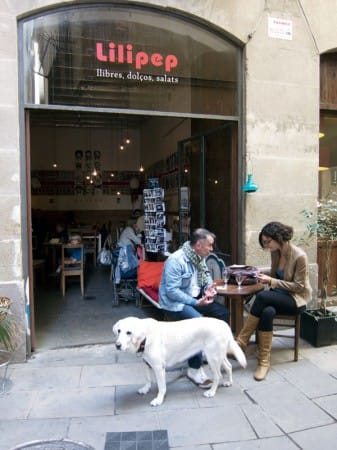 Lilipep
Lilipep
This tiny hole in the wall is tucked away amongst the warren of narrow backstreets in the Born neighborhood. The eclectic décor (among many other choice items, there are puppets, paintings of clowns and pages of old Spanish soap opera magazines pasted to the walls), along with several mismatched tables, some worn-out armchairs and a few shelves of used books, make it clear that this is a place to relax. The menu consists mainly of small salads and sandwiches and their specialty is the “German breakfast,” which comes with dark German bread, cheese, sausage and a hard-boiled egg. Personally, I go for their homemade desserts, in particular the lemon meringue pie, which has a cookie crumb crust and just the right amount of tartness.
Granja Petitbo
When this café/restaurant opened in the Right Eixample in December 2012, it quickly became one of my new favorite spots. Located in a former granja, a place traditionally authorized to produce and distribute milk products, the space has been reinvented with an aesthetic that’s somehow both industrial and cozy at the same time. Old cracked leather sofas are interspersed with unfinished concrete walls and wide-planked wood floors. The menu makes use of fresh ingredients in simple dishes such as sandwiches, quiches, salads and house-made pastries. During the week Petitbo is quiet, the perfect place for a morning coffee or a late-afternoon cocktail. However, when I have the patience to wait for a table, what I really love is their Sunday brunch. Pancakes and vermouth, anyone? – Johanna Bailey
Johanna BaileyJohanna Bailey
Published on June 04, 2013
Related stories
April 16, 2013
Barcelona | By Johanna Bailey
BarcelonaDear Culinary Backstreets, We will be visiting Barcelona with our children. Do you have any good recommendations of places in the city to eat with kids? First of all, you should know that in Spain, you are welcome with children in just about any dining establishment. Because Spaniards don’t tend to entertain much in their…
January 23, 2013
Barcelona | By Johanna Bailey
BarcelonaDear Culinary Backstreets, In just about every restaurant or bar I’ve been to in Barcelona, I’ve seen a dish called “tortilla.” What exactly is a tortilla and can you recommend any places where they are done especially well? Although it would seem that much of the world imagines the inhabitants of Spain subsisting largely on…
October 24, 2012
Barcelona | By Johanna Bailey
BarcelonaThe large banner in La Nena chocolatería proclaiming “No Hay Alcohol” (strung up between a rocking horse and a wooden toy kitchen) makes it fairly clear that this is not a place for sophisticated conversation and cocktails. That doesn’t mean that La Nena (which means “The Girl” in Catalan) doesn’t cater to any other vices.…

